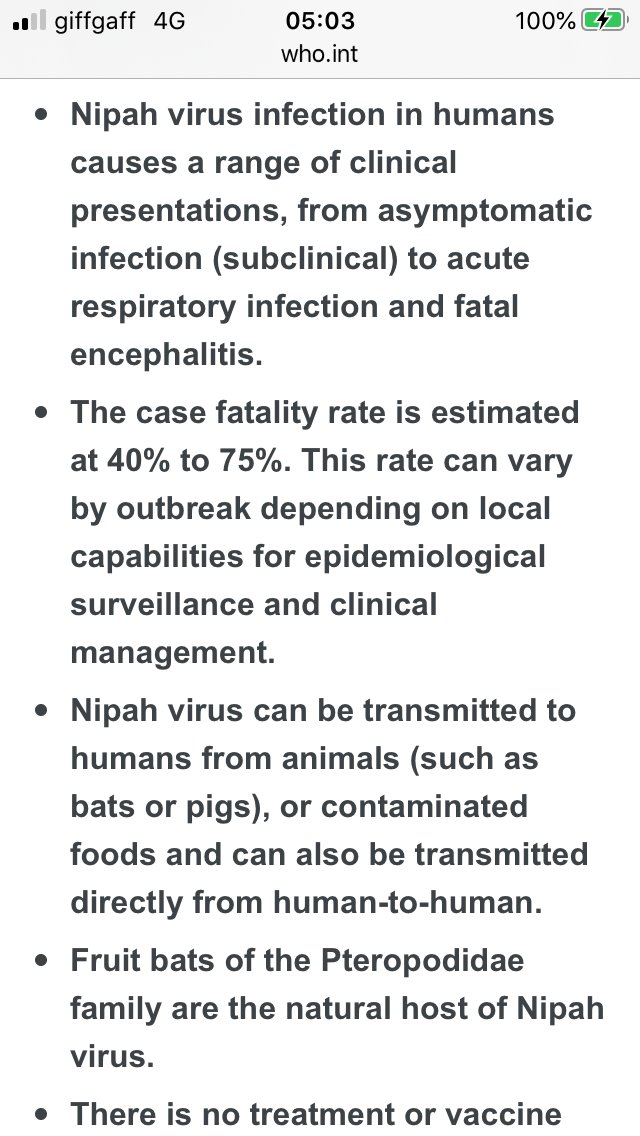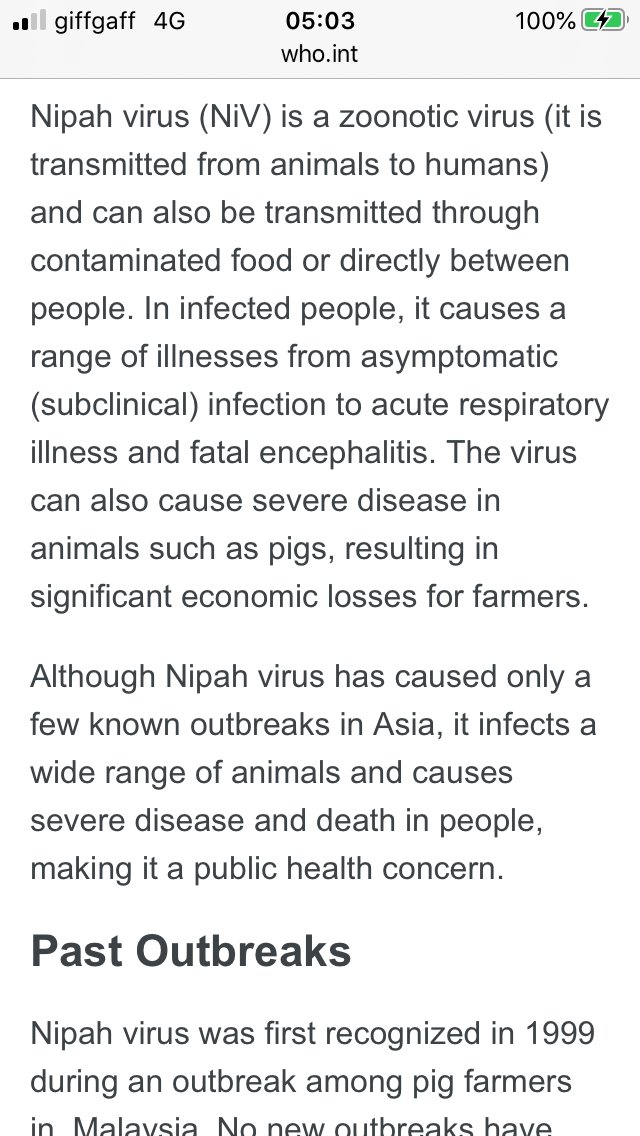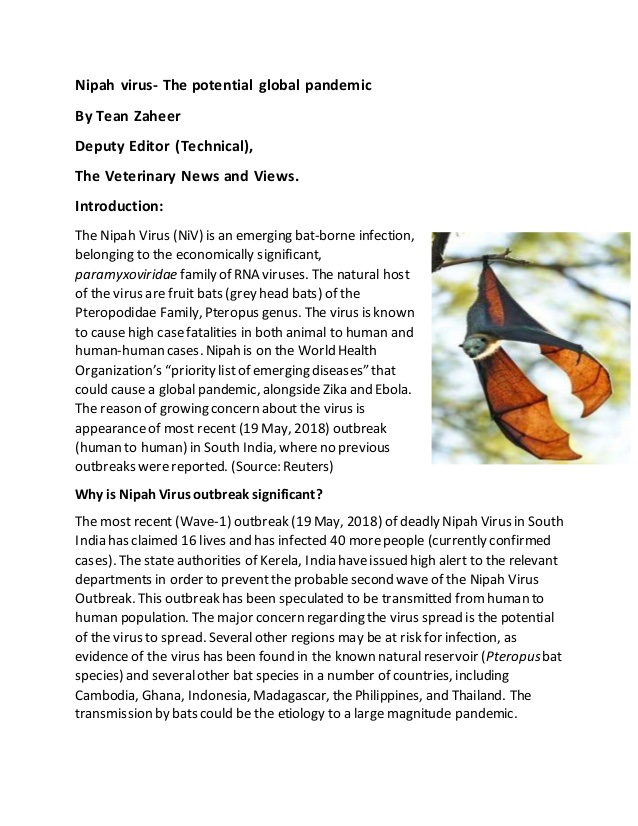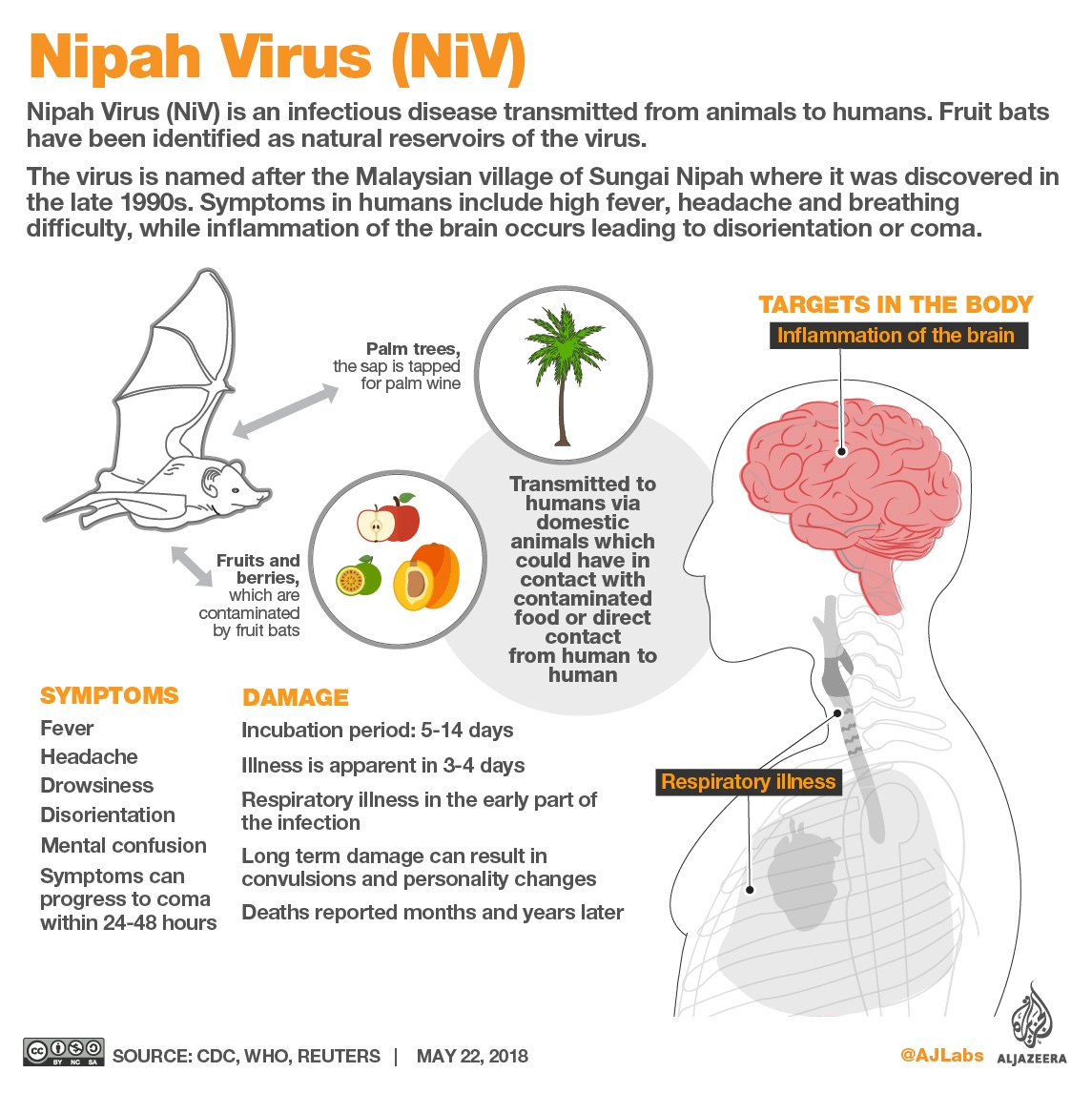this will not be a comfort to anyone but #spillover is going to be increasingly frequent, as a consequence of species (e.g. bats) being forced upon into new + different environment.
stress >> particle diffusion.
we can predict far more virulent and deadly viruses than Covid-19.
stress >> particle diffusion.
we can predict far more virulent and deadly viruses than Covid-19.
zoonatic diseases:
https://www.cdc.gov/onehealth/basics/zoonotic-diseases.html
https://www.cdc.gov/onehealth... href=" https://en.m.wikipedia.org/wiki/Zoonosis
going">https://en.m.wikipedia.org/wiki/Zoon... forward, preparedness and resilience will be essential to our collective survival.
still, the forced •movement of species (stress >> release of viral particles >> viral spread) has to be confronted — now.
https://www.cdc.gov/onehealth/basics/zoonotic-diseases.html
going">https://en.m.wikipedia.org/wiki/Zoon... forward, preparedness and resilience will be essential to our collective survival.
still, the forced •movement of species (stress >> release of viral particles >> viral spread) has to be confronted — now.
this is a highly instructive case:
the Nipah virus (Malaysia, 1999)
https://www.who.int/news-room/fact-sheets/detail/nipah-virus
we">https://www.who.int/news-room... can consider ourselves ‘lucky’ in the sense that Covid—19 has an extremely low mortality rate.
one day we might experience the spread of a virus that is far more virulent — and deadly.
the Nipah virus (Malaysia, 1999)
https://www.who.int/news-room/fact-sheets/detail/nipah-virus
we">https://www.who.int/news-room... can consider ourselves ‘lucky’ in the sense that Covid—19 has an extremely low mortality rate.
one day we might experience the spread of a virus that is far more virulent — and deadly.
a.
the primary driver of land use change, thus new zoonotic diseases, is via agriculture: industrial farming (oil palm, soya).
this >> factors that •displace species, forcing them to locate food in new environments.
this will take species
#spillover
#viralspread
#pandemic
the primary driver of land use change, thus new zoonotic diseases, is via agriculture: industrial farming (oil palm, soya).
this >> factors that •displace species, forcing them to locate food in new environments.
this will take species
#spillover
#viralspread
#pandemic
b.
(e.g. indigenous bats) directly to the homes (the ^environments) of people — viral hosts that have far weaker immune systems /immune response than [the infecting species].
viral spread depends upon •opportunity.
essentially, we should preclude the means of pathogen spread.
(e.g. indigenous bats) directly to the homes (the ^environments) of people — viral hosts that have far weaker immune systems /immune response than [the infecting species].
viral spread depends upon •opportunity.
essentially, we should preclude the means of pathogen spread.
c.
this also comes down to consumer effect — our choices, especially in the west.
about 2/3 of the global soya crop is used to produce animal (livestock) feed — to feed the animals that we consume at industrial levels for cheap protein (chicken, beef).
#foodchain
#displacement
this also comes down to consumer effect — our choices, especially in the west.
about 2/3 of the global soya crop is used to produce animal (livestock) feed — to feed the animals that we consume at industrial levels for cheap protein (chicken, beef).
#foodchain
#displacement

 Read on Twitter
Read on Twitter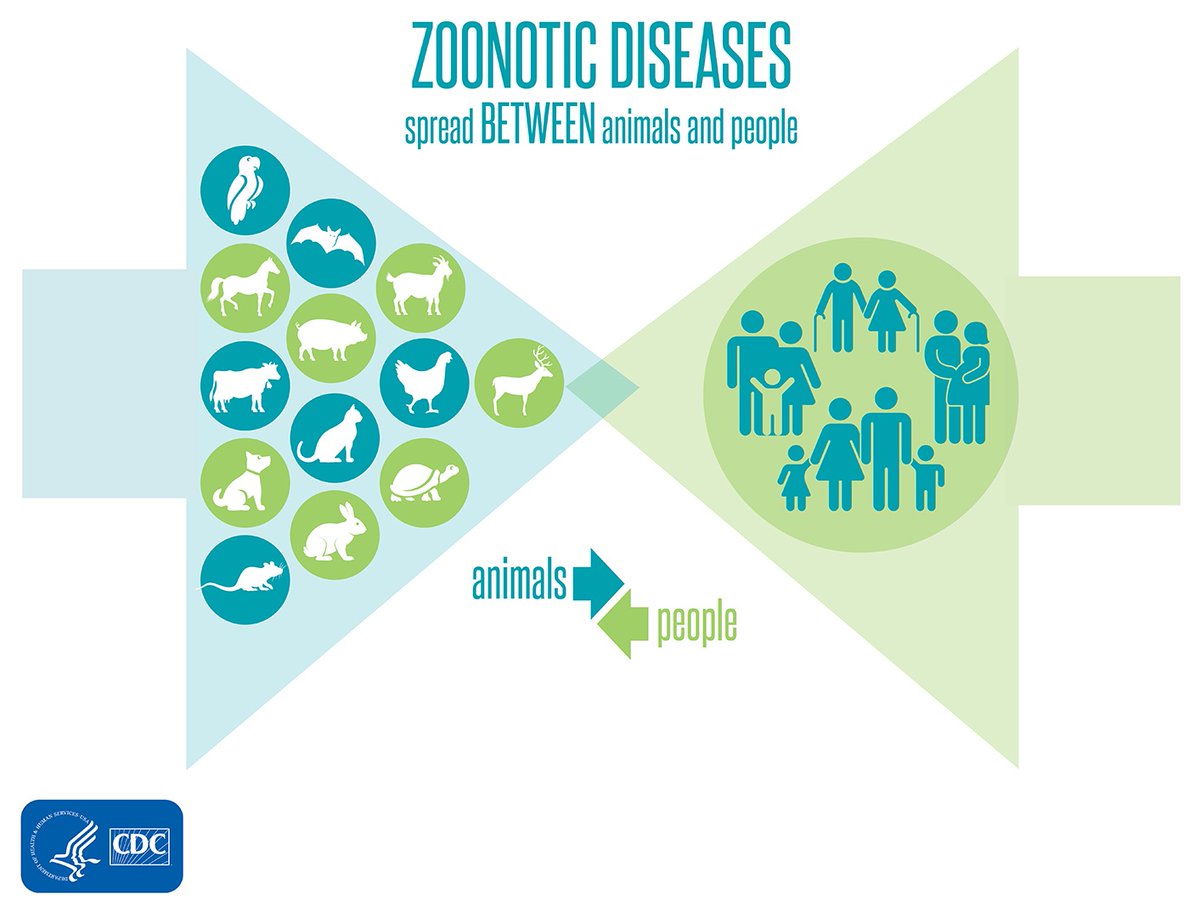 https://en.m.wikipedia.org/wiki/Zoon... forward, preparedness and resilience will be essential to our collective survival.still, the forced •movement of species (stress >> release of viral particles >> viral spread) has to be confronted — now." title="zoonatic diseases: https://www.cdc.gov/onehealth... href=" https://en.m.wikipedia.org/wiki/Zoonosis going">https://en.m.wikipedia.org/wiki/Zoon... forward, preparedness and resilience will be essential to our collective survival.still, the forced •movement of species (stress >> release of viral particles >> viral spread) has to be confronted — now.">
https://en.m.wikipedia.org/wiki/Zoon... forward, preparedness and resilience will be essential to our collective survival.still, the forced •movement of species (stress >> release of viral particles >> viral spread) has to be confronted — now." title="zoonatic diseases: https://www.cdc.gov/onehealth... href=" https://en.m.wikipedia.org/wiki/Zoonosis going">https://en.m.wikipedia.org/wiki/Zoon... forward, preparedness and resilience will be essential to our collective survival.still, the forced •movement of species (stress >> release of viral particles >> viral spread) has to be confronted — now.">
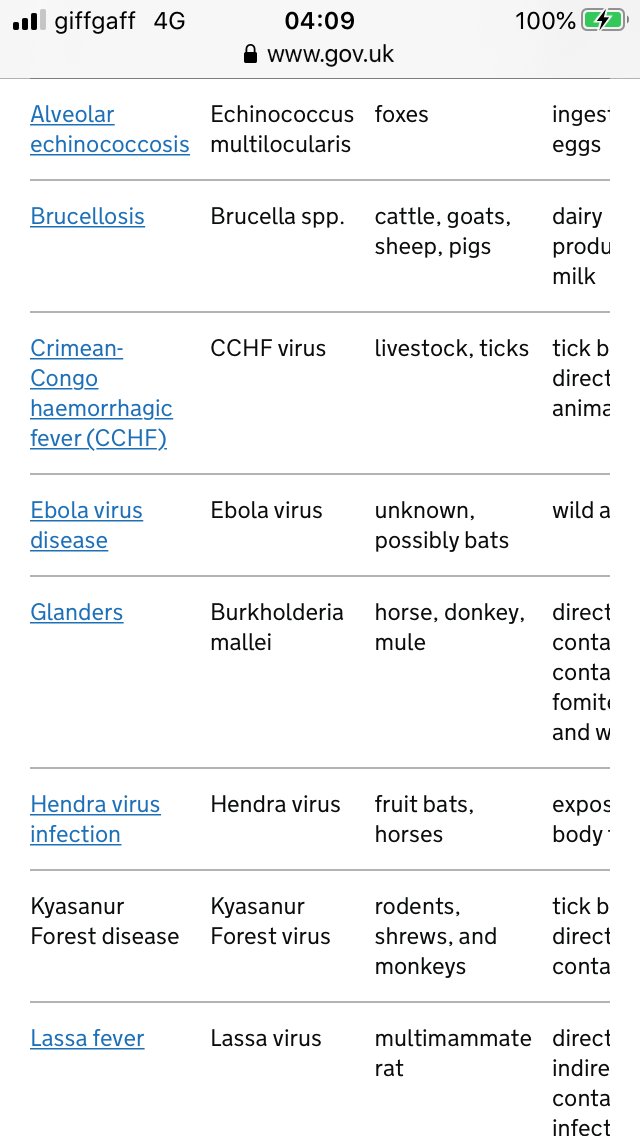 https://en.m.wikipedia.org/wiki/Zoon... forward, preparedness and resilience will be essential to our collective survival.still, the forced •movement of species (stress >> release of viral particles >> viral spread) has to be confronted — now." title="zoonatic diseases: https://www.cdc.gov/onehealth... href=" https://en.m.wikipedia.org/wiki/Zoonosis going">https://en.m.wikipedia.org/wiki/Zoon... forward, preparedness and resilience will be essential to our collective survival.still, the forced •movement of species (stress >> release of viral particles >> viral spread) has to be confronted — now.">
https://en.m.wikipedia.org/wiki/Zoon... forward, preparedness and resilience will be essential to our collective survival.still, the forced •movement of species (stress >> release of viral particles >> viral spread) has to be confronted — now." title="zoonatic diseases: https://www.cdc.gov/onehealth... href=" https://en.m.wikipedia.org/wiki/Zoonosis going">https://en.m.wikipedia.org/wiki/Zoon... forward, preparedness and resilience will be essential to our collective survival.still, the forced •movement of species (stress >> release of viral particles >> viral spread) has to be confronted — now.">
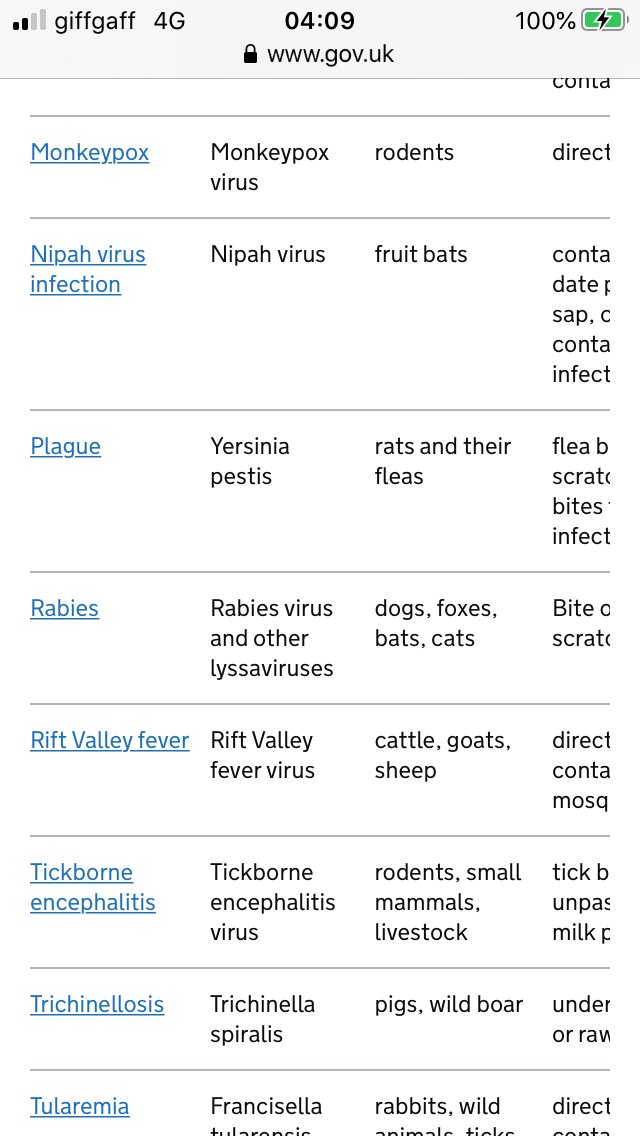 https://en.m.wikipedia.org/wiki/Zoon... forward, preparedness and resilience will be essential to our collective survival.still, the forced •movement of species (stress >> release of viral particles >> viral spread) has to be confronted — now." title="zoonatic diseases: https://www.cdc.gov/onehealth... href=" https://en.m.wikipedia.org/wiki/Zoonosis going">https://en.m.wikipedia.org/wiki/Zoon... forward, preparedness and resilience will be essential to our collective survival.still, the forced •movement of species (stress >> release of viral particles >> viral spread) has to be confronted — now.">
https://en.m.wikipedia.org/wiki/Zoon... forward, preparedness and resilience will be essential to our collective survival.still, the forced •movement of species (stress >> release of viral particles >> viral spread) has to be confronted — now." title="zoonatic diseases: https://www.cdc.gov/onehealth... href=" https://en.m.wikipedia.org/wiki/Zoonosis going">https://en.m.wikipedia.org/wiki/Zoon... forward, preparedness and resilience will be essential to our collective survival.still, the forced •movement of species (stress >> release of viral particles >> viral spread) has to be confronted — now.">
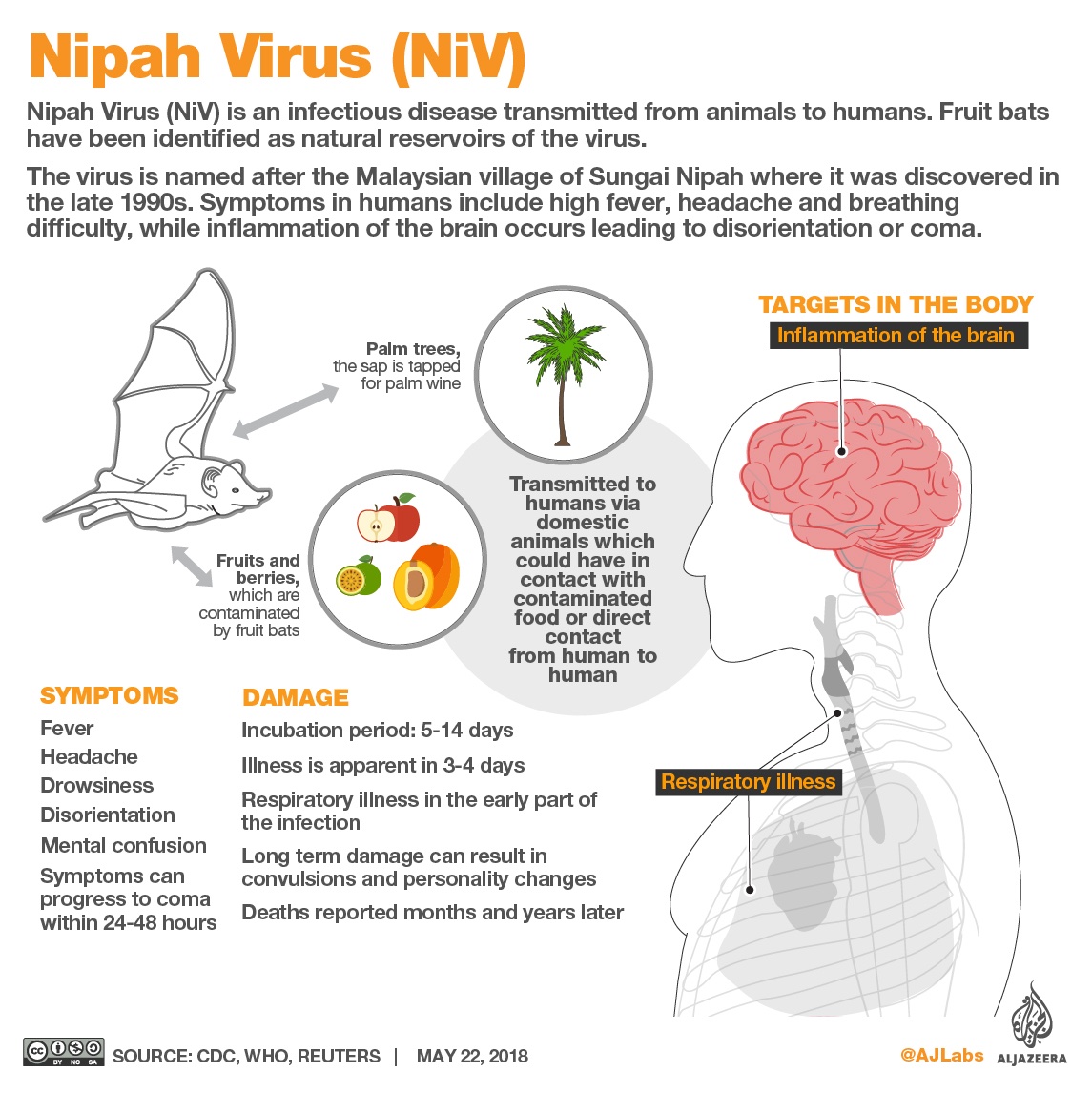 https://en.m.wikipedia.org/wiki/Zoon... forward, preparedness and resilience will be essential to our collective survival.still, the forced •movement of species (stress >> release of viral particles >> viral spread) has to be confronted — now." title="zoonatic diseases: https://www.cdc.gov/onehealth... href=" https://en.m.wikipedia.org/wiki/Zoonosis going">https://en.m.wikipedia.org/wiki/Zoon... forward, preparedness and resilience will be essential to our collective survival.still, the forced •movement of species (stress >> release of viral particles >> viral spread) has to be confronted — now.">
https://en.m.wikipedia.org/wiki/Zoon... forward, preparedness and resilience will be essential to our collective survival.still, the forced •movement of species (stress >> release of viral particles >> viral spread) has to be confronted — now." title="zoonatic diseases: https://www.cdc.gov/onehealth... href=" https://en.m.wikipedia.org/wiki/Zoonosis going">https://en.m.wikipedia.org/wiki/Zoon... forward, preparedness and resilience will be essential to our collective survival.still, the forced •movement of species (stress >> release of viral particles >> viral spread) has to be confronted — now.">
